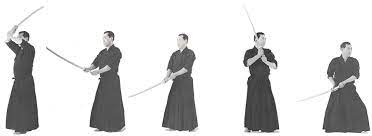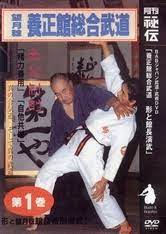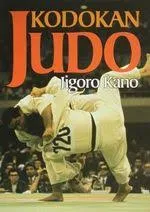The following is a comment to my first post referred to in the
third post of this series:
I appreciated the input of all the teachers at JdJ they each had a different perspective/approach. Where I think problems lie is the assumption that every student wants to become an instructor and so have a perfect understanding of the theory and practice. To my mind this has meant that the grading system has become very unwieldy and overly long.
That commentor makes a good point, however, their comment focuses on the backend of the Jan de Jong (JDJ) jujutsu grading system; there are also issues with the rest of the grading system which contributes to the entire grading system being 'very unwieldly and overly long.'
The way I describe it is that the grading system is disjointed, overly cumbersome, and overly burdensome, but I do agree with the above commentor that the focus on producing instructors at the backend of the grading system has contributed significantly to those problems. All of these issues and more can be understood with an understanding of the development of the grading system.
The way I see it is that the JDJ jujutsu grading system is version 1.0. A 2.0 version is needed: '2.0, adjective, used postpositively to describe a new and improved version or example of something or someone.'
Why is a 2.0 version needed? Because without it, the JDJ tradition will die. The knowledge and understanding within the grading system that JDJ developed/accumulated over his lifetime will be lost. JDJ's life’s work will be lost. The grading system contains 'faults' (for want of a better word), however, within those faults lies the opportunity for insights that can lead to a new and better understanding that extends far beyond the JDJ grading system, and those insights too will be lost.
In order understand technically why a version 2.0 is needed, and in order to develop a version 2.0, one needs to understand how version 1.0 was developed. Knowing how version 1.0 was developed provides insights that help to understand what needs to be improved and why.
Don't get me wrong, JDJ did an amazing job with 1.0, particularly given what he had to work with at the time (see below). There are unique innovations within his grading system that would benefit many other martial arts grading systems (and the Australian Army as Major Greg Mawkes MBE (retired) explains below). There are also 'faults.'
I have said to others that the grading system was a 'first attempt' (1.0) in need of study and modification. To the best of my knowledge, I am the only person to have performed an indepth study of the JDJ jujutsu grading system, the results of which are being shared in this and future posts.
Looking back at past posts in this blog, I can see that they were explorations building up to this comprehensive view (see my learning process in the
fourth post of this series).
A summary of the development process of the grading system is that it was developed by JDJ who had relatively little, if any, experience with grading systems, and it was developed piecemeal to meet JDJ's personal needs at the time.
There are four distinct stages in the development of the JDJ jujutsu grading system: the
kyu system,
shodan, the
mon system, and
nidan and
sandan. This post will look at the
kyu system. The other stages will be looked at in the following posts.
THE KYU SYSTEM
JDJ emigrated to Perth, Western Australia in 1952, and the way he described it was that he initially worked as a labourer before starting to teach some of his work colleagues at lunch or after work when they found out that he knew some martial arts. His teaching proved popular and he saw a business opportunity that could become his sole source of income, but first he needed a grading system. That is how the
kyu system came to be.
The current
kyu system consists of six grades:
rokkyu (6th
kyu, yellow),
gokyu (5th
kyu, blue),
yonkyu (4th
kyu, green),
sankyu (3rd
kyu, orange),
nikyu (2nd
kyu, purple),
ikkyu (1st
kyu, black & white), but it wasn't always like that.
History
JDJ's original
kyu system (mid-1950s) consisted of
seven grades. It reflected the 'ranking system' included in Tsutsumi Masao and Higashi Katsukuma's Die Selbstverteidigung (Jiu-Jitsu): nebst einem Anhange über Kuatsu (Wissenschaft der Wiederbelebung Verunglückter): mit 72 Abbildungen nach dem Leben (Self-defense (Jiu-Jitsu): along with an appendix on Kuatsu (science of resuscitation of casualties): with 72 illustrations based on life) published in Germany in 1906:
Ranking of student
The performance of the students is divided into seven gradations, which I make recognizable by the different colors of their belts.
Red is the color for the beginners.
Yellow for the students of the sixth rank
White for the students of the fifth rank
Green for the students of the fourth rank
Orange for the students of the third rank
Crimson for the students of the second rank
Black and white for the students of the first rank
(Translation by Google)
JDJ owned a copy of Tsutsumi and Higashi's book, which he prized and kept separately in a display cabinet in his study.
JDJ told of how he was considered by the Netherlands-Dutch to be 'affected' by the sun, having been brought up in Indonesia, when he would first collect his suitcase of martial arts books before heading to a bomb shelter during WWII air raids. JDJ said that he acquired Tsutsumi and Higashi's book while living in Holland during that time. Books were to become a big part of JDJ's professional development.
Even though one of the authors of the abovementioned book is credited as being Tsutsumi, and recognition is provided in the book of training under a master of Tsutsumi, there is no explicit claim that the book is about
Tsutsumi Hozan Ryu jujutsu (THR). And there are no details of the content of the ranks in Tsutsumi and Higashi's book.
A difference between the Tsutsumi and Higashi's ranking system and JDJ's original
kyu grading system is that red belt was not a 'beginners' grade in the latter. It was an actual grading that required successful completion before being awarded a red belt.
Warwick 'Zak' Jaggard commenced training with JDJ in 1963 and was graded
ikkyu in 1974 before teaching full-time for JDJ in 1975. I had the good fortune of living with Zak and his family in the early 90s when I was living and working in London. Zak confirmed that the grading system he engaged in consisted of six grades, with red belt not being included. Thus, between the mid-1950s and 1963, JDJ appears to have excised the red belt grading from his grading system.
White belt was the third rank in the Tsutsumi and Higashi ranking system and in JDJ's original
kyu grading system, and was retained as the second grade in JDJ's modified
kyu grading system. In the current grading system, it is now blue belt, which is a change since Zak engaged in the grading system.
White belt is universally recognised as a beginner's rank and comes from Kodokan Judo. Jigoro Kano, founder of Kodokan Judo, introduced the
kyu-dan system with white and black belts being used respectively to distinguish between the two.
There has been speculation as to where the coloured belts for the
kyu grades came from, which I discuss in the above linked
post: 'This is an important issue as the conceived wisdom is that the coloured belt
kyu grading system (in judo) did not originate until the
1930s, albeit in the UK and/or France.' Remember, the Tsutsumi and Higashi ranking system was included in a book published in 1906.
Did JDJ change the belt from white to blue and reserve the white belt for beginners when he received more exposure to
kyu coloured belt systems, in particular the Kodokan Judo system? It has to be remembered that he was located in the most isolated capital in the world and martial arts, even by his own admission, was not a big thing in Australia then, let alone in Perth: ‘Looking back at my own early years in Australia (1952-1963), self defence was considered a rather peculiar and odd thing to do’ (JDJ: Jan de Jong Self Defence School, 1997,
Jan de Jong: the man, his school, and his ju jitsu system, p. 3). There was no internet, no videos or DVDs; there were only books, and JDJ was an avid collector of martial arts books.
It should also be noted that in the Kodokan Judo grading system, black & white belt was reserved for female
dan grades and is not included in any other grading system to the best of my knowledge. Before my first trip accompanying JDJ to Europe, Peter Clarke (see below) warned me that I would be questioned about my black & white belt. Sure enough, before I left the change room for the first time, I was asked what grade my black & white belt represented.
In all of the 'studies' that have attempted to establish the origins of the
kyu coloured belt system, not one has referred to Tsutsumi and Higashi's ranking system, the first mentioned
kyu coloured belt system (see above). The one where white belt is not for beginners and black & white belt is for males, and possibly females. 'What's going on here?', which is how Klein operationalises the curiosity path to insight (see
third post).
The question is, are JDJ's
kyu grades those of Tsutsumi and Higashi which may or may not be THR grades, or did JDJ simply appropriate the ranking structure from the Tsutsumi and Higashi book to develop a grading system? If so, what did he populate those grades with? Was it the teachings of his original instructors, the Saito brothers, or not? If not, where did they come from.
Shinken Shobu no Kata
The
kyu gradings in JDJ's grading system are referred to, for the most part (see
nikyu and
ikkyu below), as
shinken shobu no kata (
kata of real fighting) or 'reflex grades.'
Shinken shobu no kata is the name of a
kata in Kodokan Judo that was renamed
kime no kata. JDJ gradings are not Kodokan Judo's
shinken shobu no kata/kime no kata.
A
kata consists of prescribed defences against prescribed attacks performed in a strict order. Is JDJ's
shinken shobu no kata a
kata?
JDJ's
shinken shobu no kata consists of prescribed defences against prescribed attacks, however, they are performed randomly at the instruction of the examiner without the grading candidate seeing the instruction. This is the 'reflex' element in the grading because the grading candidate does not know what attack is coming and must act reflexively, which is the purpose of this training method.
Major Greg Mawkes MBE (retired) had this to say about the reflex method of training when writing about his involvement with JDJ in updating the Army's capability for unarmed combat training:
'The reflex method of training and testing is particularly appropriate to the instinctive reactions that must be developed in unarmed combat exponents' (Jan de Jong Self Defence School, 1997,
Jan de Jong: The man, his school, and his ju jitsu system, p. 23).
The question was raised above: is JDJ's
shinken shobu no kata a
kata? The vast majority of those familiar with JDJ's
shinken shobu no kata would say no, however, it's not as simple as that.
I used the
kata training method to prepare students for JDJ's
shinken shobu no kata gradings to great effect. This training method produced superior results in my student's grading performances, which was acknowledged by JDJ, the performances not the training method given that he was unaware of it.
JDJ's use of the
shinken shobu no kata/reflex method for gradings has to be commended. It is UNIQUE to the JDJ tradition and should be promoted as such. I have found only one other method that even closely resembles it, and that is 'one-step sparring' in one of Mas Oyama's books on Kyokushin karate.
In marketing terms, being unique is a 'point of differentiation' with all other 'products' (marketing 101 - differentiate the product), however, if one is to promote the
shinken shobu no kata as being a unique point of differentiation, one must understand that it is unique and why it is a superior training method. To date, with the sole exception of myself, that has not been the case in the JDJ tradition.
For those that will 'turn their noses up' at the reference to 'marketing,' the same differentiate-the-product concept applies in relation to fighting methods. Points of differentiation determines what is considered to be superior fighting methods.
Btw, the
shinken shobu no kata method described above is for use in gradings, however, it is also a very versatile training tool as well. For instance, the instructor can limit the defence to one technique with different attacks signalled by the instructor, and one attack but different defences. Another innovation that is included in JDJ's teachings.
There is of course the question - where did JDJ get this unique form of training and grading from? That is a question that remains unanswered, however, in asking that question it provides insights that can lead to a new and better understanding (see
third post).
One of those insights is that JDJ did not reveal the sources of his teachings (see
previous post). Understanding the sources of JDJ’s teachings can lead to new insights that can lead to a new and better understanding, as you will see, and which will help in pursuit of grading system 2.0, if in fact one wants to see further by 'standing on the shoulders of giants' (see
previous post).
Classification
JDJ is also to be commended on classifying the defences in his
shinken shobu no kata grades by the type of attack. Most other grading systems that I have seen simply include a list of techniques to be demonstrated.
You will recall from the
third post that the 'core of all learning' is the identification of similarities and differences. One of the proven highly effective ways of identifying similarities and differences is classification. Classification is often thought of as an administrative exercise and treated with disdain within the martial arts community. Lakoff (1) warns against such a dismissive attitude. He suggests that there is nothing more basic to our thought, perception, action, and speech than classification and that without the ability to classify we could not function at all, either in the physical world or in our social and intellectual lives.
(1) G. Lakoff, 1987,
Women, fire, and dangerous things: What categories reveal about the mind, Chicago, University of Chicago Press.
The above is taken from a chapter in my book that is tentatively titled,
The Science Behind All Fighting Techniques.
Tricks and Progression
In the
Complete Kano Jiu-Jitsu, Hancock and Higashi (1905) label all of the techniques included in that book as 'tricks.' This is what many jujutsu, and even many martial arts, systems are based on - a series of 'tricks.' The 'tricks' are taught separately and independently with no connection between them being recognised/understood (connection being one of the paths to insight that Klein identified (see
third post)).
JDJ has been described as a 'collector of techniques.' That is fair enough, but there is more to it than that.
While JDJ did not include an analytical element to his teachings at this stage, to which he admits when discussing the introduction of the
mon system in a later interview (see future post on the
mon system), there was some progression in his
kyu grades. This progression is seen in that each grading increasing the number of attack-defence combinations in each of the
kyu grades, as has been illustrated in a series of
posts.
Another, and more important example of progression contained in the kyu grades is the
tomoe nage (stomach throw) defence from
kubi-tsukami shime (neck seizing strangulation attack). In the first grading,
uke is 'thrown away,' when performing the defence. That never happens again even though the same defence from the same attack is included in a number of other gradings.
In 4th
kyu, the same attack-defence combination but this time
tori rolls up and applies
ashi-gatame ude-kujuki (leg-set arm-breaking; it should have been described as
hiza-gatame ude-kujuki (knee-set arm-breaking to be consistent now that I am studying it). In 2nd
kyu, there are four defences when
uke resists the
hiza-gatame ude-kujuki.
Teach a basic technique, then teach a more 'controlling' technique, and then teach 'what if" = progression. This can be seen in a number of attack-defence combination in the
kyu grades. A really well thought out progression in the grading system by JDJ, but one that is not recognised or appreciated due to the attitude of teaching and doing without question (see
fourth post). Teaching and learning tricks.
Nikyu (2nd kyu) Purple Belt
The current
nikyu consists of two gradings: revision (
kime no kata) and practical (
shinken shobu no kata). Yeah, I know, I see the issue with the two Japanese names as well (see above), moving on. Zak (see above) confirmed that there was only the practical grading in his time, which means the revision grading had to have been introduced post-1974.
Here is where a timeline helps:
1969. JDJ travelled to Japan to train under Minoru Mochizuki, founder of Yoseikan budo, for a brief period.
1974. JDJ asked Mochizuki to send an instructor to Perth, which he did in the person of
Yoshiaki Unno. Hans de Jong explains in an interview for
Blitz magazine that he and his father trained with Unno for two hours, six days a week, for two years. After that, Unno left to establish his own school.
1978. The
mon grades were introduced into JDJ's jujutsu grading system. Those gradings are primarily based on Yoseikan teachings, as will be explained in a future post.
The revision grading in
nikyu is comprised of
ukemi,
kuzushi,
kansetsu-waza, i
tsitsu no kata, and
wakai no kata sections. The first three elements are based on the
mon grades which are primarily based on Yoseikan teachings.
Itsitsu no kata is a Yoseikan
kata. It is designed to teach the five basic
taisabaki ((evasive) body-movements) taught by Yoseikan. JDJ never shared the source of this
kata (see
previous post).
Wakai no kata is a
kata that JDJ developed to improve his student's punching and kicking skills, possibly after Unno found them wanting. It is included in the now red belt which is part of the
mon system even though it is referred to as 7th
kyu (see future post regarding the
mon system).
The question is, is this revision grading revising the
kyu grades? This leads to another question, what do the
kyu grades have in common with the
mon grades, if anything?
Ikkyu (1st kyu) Black & White Belt
The original
ikkyu grading, according to Zak (see above), was comprised of reflex, teaching, theory, terminology, philosophy, and history gradings. This is pre-1974.
The current
ikkyu grading includes the above gradings, although the philosophy section is subsumed into the history section, and three more gradings:
ken no michi (sword basics),
kime no kata (revision), and first aid.
The
ken no michi grading was developed by Greg Palmer to teach the basics of sword work before attempting the sword gradings in the
dan grades. As I explained in the first and third posts of this series, Greg was a professional teacher and he understood teaching principles, including progression. It makes sense to teach and examine the basics before teaching and examining the basics in action. Greg successfully lobbied for it to be included in the grading system so as to prepare the students for the sword gradings in the
dan grades. It was a rare instance where someone other than JDJ contributed to JDJ's grading system.
The
ikkyu kime no kata does revise the
kyu grades, unlike the
nikyu revision grading (see above). The grading requires the grading candidate to demonstrate techniques from
rokkyu to
nikyu (see above) in a
kata format.
Why the two types of revision gradings? Why did JDJ decide to include a revision grading in these two gradings post-1974? When did JDJ introduce the revision gradings into these two gradings? Is the answer to those questions got to do with
ikkyu being principally an instructor grading and the timing of the introduction of the
mon system which is based on Yoseikan teachings? Did JDJ come to consider
nikyu as an assistant instructor (
sempai) grading of sorts? When JDJ developed and introduced the
shodan grading (see next post),
ikkyu came to seen as producing
sempai and therefore the
ikkyu gradings
sempai gradings.
The first aid element involves obtaining a first aid certificate from an accredited organisation such as St John Ambulance Association. This is an extremely responsible requirement for instructors that JDJ introduced post-1974.
Ikkyu is an Instructor Grading
One of JDJ's senior instructors used to say that
ikkyu was a 'fighter's grading' whereas
shodan was an instructors grading. That instructor (a) had a focus on 'warrior' culture, and (b) could not have been more wrong. Any reading of the
ikkyu syllabus would see that it is primarily designed to produce instructors. It has to be remembered that at this time there were no
dan grades and no
dan grading system, and all of the instructors were graded
ikkyu.
The inclusion of the instructor elements in the grading is yet another innovation of JDJ. It is a very rare attribute in a martial arts grading system, however, what needs to be understood is that this kyu grading system that JDJ developed was designed to be a one-off grading system. A complete system. It was not part of a greater system. There were no plans for a dan grading system at that time. There was no looking ahead.
Robert Hymas, Peter Clarke, and John Copley were the first to be graded shodan by JDJ (1981. source: Greg Palmer). Why didn't JDJ grade anyone shodan before that? That is a question that was sometimes asked by senior members and instructors of the Jan de Jong Self Defence School (JDJSDS). A common answer to that question was because JDJ did not want instructors to be going out teaching on their own in competition with him. I never subscribed to that view, even way back when. I said that that view was overly cynical and gave JDJ too much credit in terms of business strategy.
The point is, JDJ didn't need yudansha (black belt holders). This was in the halcyon days of the JDJSDS when people were lined up down the street to enrol in the school, and where there were 800-1000 students, all with ikkyu instructors. He didn't need shodans, he didn't have a shodan grading, and there was no reason to develop one.
Next
In the next post, the shodan grading will be explored as the second part of the development of the JDJ grading system story.
























